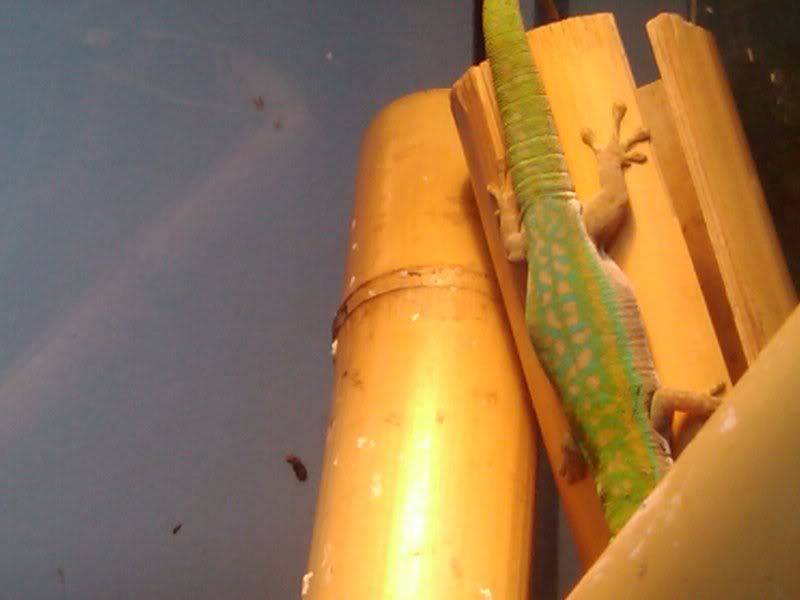mkschaefer
New member
I just introduced a female cepediana to my male. I am presently working with 1.2. I had 1.3 until a made a foolish mistake last year. I had surgery and when I get home I checked on all my Phelsuma. I had not seen one of my female P. cepediana for a few days, which is common unless you sit still and wait, so I began looking for her. I took a flashlight, lifted a bamboo section out of the enclosure and there she was...until she darted out, leaped to the floor (only a short drop as I was kneeling), and ran across the floor. I had no idea where she went and, though there were multiple sightings for a while, I have not found her. I am certain she died somewhere. It was a very foolish mistake, one that I have not done with other Phelsuma (with the exception of kochi, standingi, and other big and slow Phelsuma). I really have no idea why I did it and blame it on recovery from surgery. I knew better and hope my mistake will encourage others to be more careful than I was.
Anyway, my female cepediana typically hole up in bamboo. I simply put screen with a rubber band over the end of the bamboo and can easily transport them. Unfortunately, the male does not hole up in the bamboo he has in the enclosure. I am adding larger diameter bamboo to see if he will. He is quite bold but does bolt around the enclosure if you are not slow and deliberate when doing ANYTHING.
After talking with Leann, I decided to add one female to the male's enclosure and monitor closely for some time. If she becomes gravid, I will remove the female and add the other one. I recently did the same thing with my borbonica. (The females hole up but the male is near impossible to catch, especially in his densely planted territory. I removed the very gravid female and introduced my other one). The enclosure is not as densely planted as I would like, but I think I would have much more difficulty catching them in case something happened. It has enough bamboo to give the female security, at least in my human opinion. I am not a female cepediana.
The pair is getting along quite well, though I am watching them closely. I like Leann's approach because the females naturally run to hide and so they are easily moveable. I do not have to worry about stressing myself and the male by covering him and the enclosure in mosquito netting and hoping I catch him quickly. I also like this approach as it allows me to swap females and minimizes the loss of a female as she is kept with him for a specified time. It will be interesting to compare results with others who pair their animals year round. I know that other members of the co-op have success with both methods and hope I can contribute to their valuable work with this species.
I am sorry for the poor quality of the pictures. I took the pictures late in the afternoon and had weird lighting in the gecko room. I am still trying to figure out how to take decent pictures with our new DSLR.
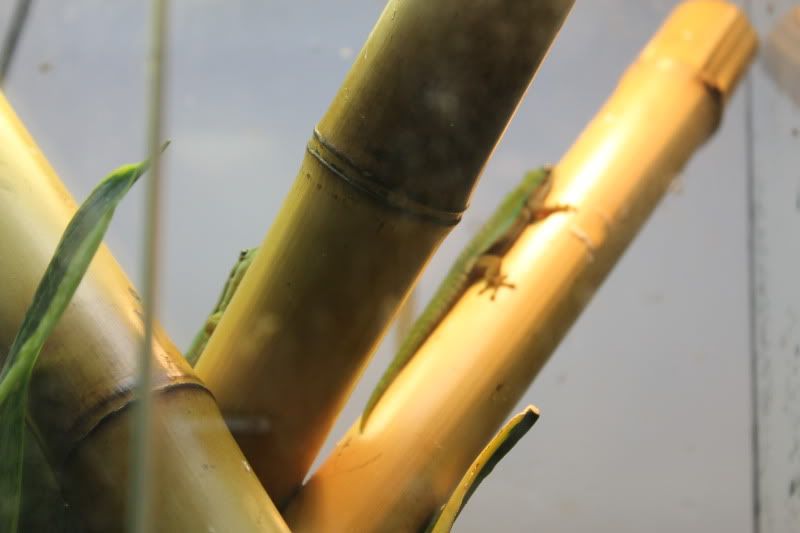
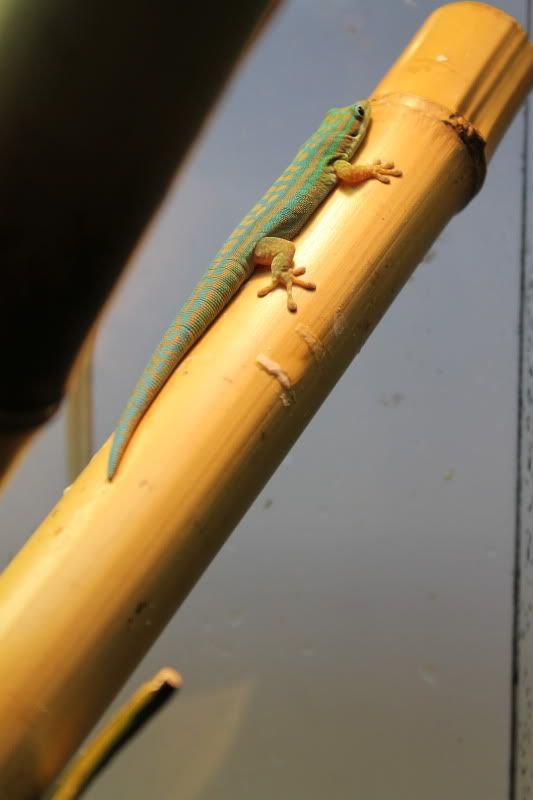
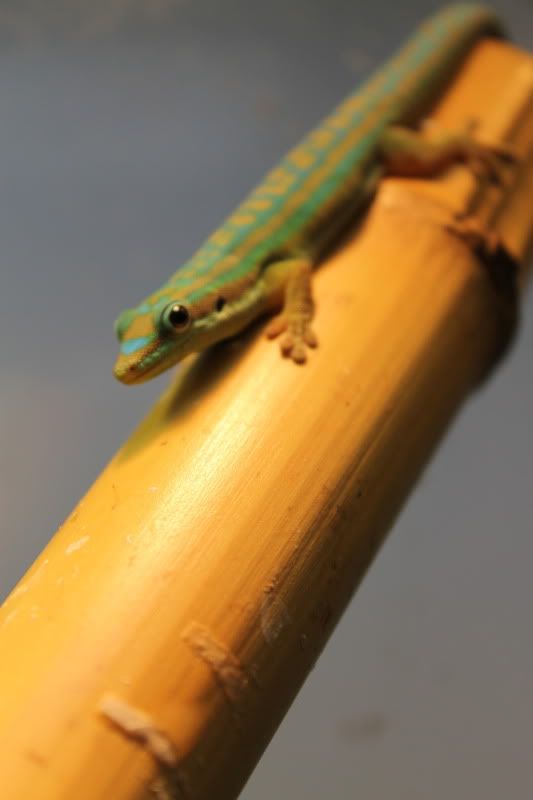
Female:
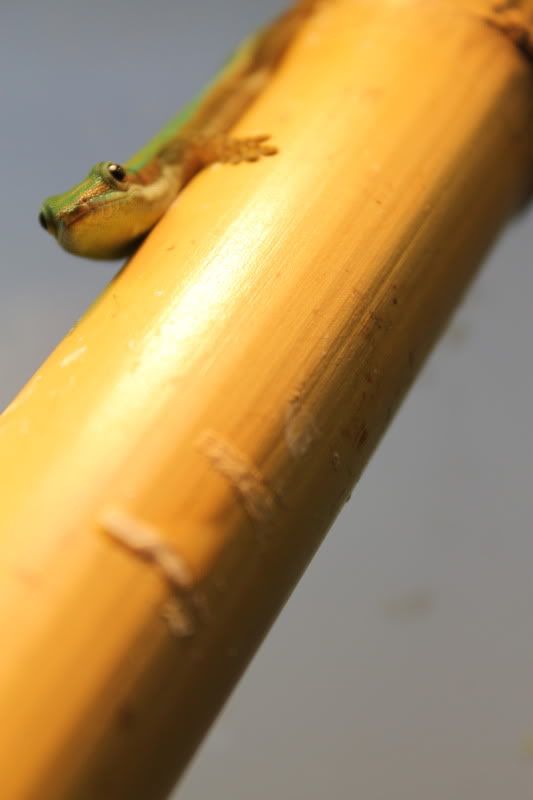
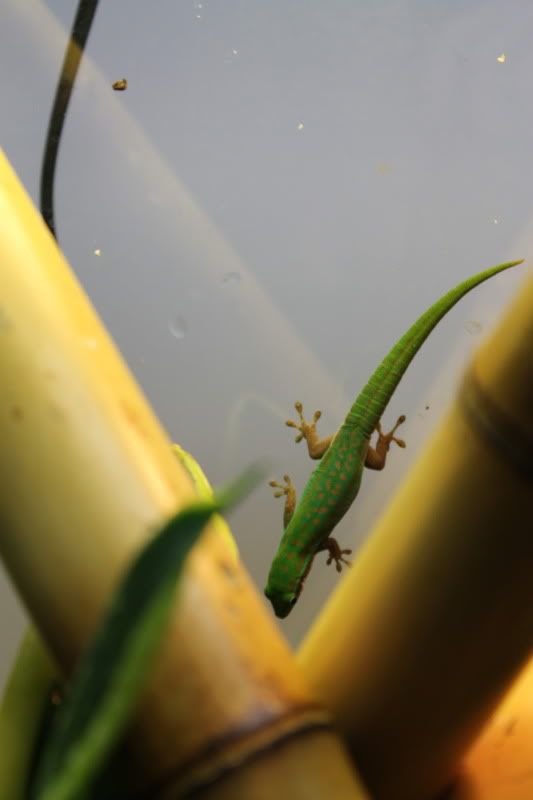
Anyway, my female cepediana typically hole up in bamboo. I simply put screen with a rubber band over the end of the bamboo and can easily transport them. Unfortunately, the male does not hole up in the bamboo he has in the enclosure. I am adding larger diameter bamboo to see if he will. He is quite bold but does bolt around the enclosure if you are not slow and deliberate when doing ANYTHING.
After talking with Leann, I decided to add one female to the male's enclosure and monitor closely for some time. If she becomes gravid, I will remove the female and add the other one. I recently did the same thing with my borbonica. (The females hole up but the male is near impossible to catch, especially in his densely planted territory. I removed the very gravid female and introduced my other one). The enclosure is not as densely planted as I would like, but I think I would have much more difficulty catching them in case something happened. It has enough bamboo to give the female security, at least in my human opinion. I am not a female cepediana.
The pair is getting along quite well, though I am watching them closely. I like Leann's approach because the females naturally run to hide and so they are easily moveable. I do not have to worry about stressing myself and the male by covering him and the enclosure in mosquito netting and hoping I catch him quickly. I also like this approach as it allows me to swap females and minimizes the loss of a female as she is kept with him for a specified time. It will be interesting to compare results with others who pair their animals year round. I know that other members of the co-op have success with both methods and hope I can contribute to their valuable work with this species.
I am sorry for the poor quality of the pictures. I took the pictures late in the afternoon and had weird lighting in the gecko room. I am still trying to figure out how to take decent pictures with our new DSLR.



Female:





